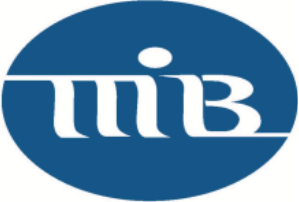PMI. Q: Our mortgage area is considering adding this paying for private mortgage insurance (PMI) upfront as an option for our borrowers. I am not familiar with this subject and want to make sure we are following the proper procedures. When a borrower pays for PMI upfront in a single payment, do they still need to receive annual notices or notice when the termination of the MI is met? Does the PMI company still issue a refund if the loan is paid off early or when LTV is less than 80%?
A: All the PMI notice requirements still apply. In addition, by law, the PMI company cannot keep unearned premiums so they would have to issue a refund if the customer paid off early, just like with monthly-payment PMI.
TILA. Q: We closed a rescindable loan on December 21, 2022, so rescission ended at midnight on Saturday, December 24. However, with the weekend and holiday, the customer didn’t actually have their funds until Tuesday, December 27 (with the holiday observance on Monday).
I just wanted to make sure that since rescission uses the precise definition of a “business day” it does not matter that our office was closed on December 24 and that we can still count that as one of the three business days of the rescission period.
A: For this loan, the bank is permitted to disburse after midnight December 24 — as long as it is reasonably certain that no person entitled to rescind has canceled. In practical terms, the bank likely will not disburse until Tuesday, December 27 if the bank was closed Saturday and Monday, December 26 for the observed Christmas Day 2022.
For rescission “business day” purposes, Monday, December 26 would still count as a “business day” (if there is a rescission period that extends over that day) since Christmas is one of the federal holidays that is defined by its specific date – December 25 – not by when the Federal Reserve and government observe Christmas.
TISA. Q: Our bank would like to offer a limited-time certificate of deposit special. When it comes to advertising on the bank’s website, would it be acceptable to include the “triggered terms” in a link or do they need to be on the same screen with the annual percentage yield (APY)? For example, the “triggered terms” could be accessible by clicking on a link labeled “Disclosure.”
A: Linking to the additional required terms is allowed, but the link must take the consumer directly to the additional information (not some chain of multiple links to get there). Also, just labeling the link as “Disclosures” might not be clear enough to at least some average consumers. It might be better to have something like, “For additional information, click here” with the link embedded in the last word.
TILA. Q: The percentage of down payment applies only to “credit sale transactions” — one in which the creditor is the seller — correct? For example, would that include loans the bank extends to finance the sale of repossessed property (home, car, etc.)? If the bank is not advertising financing this type of transaction but a simple transaction for the purchase of a home from some third party, we are permitted to say 80% LTV or 20% downpayment in our advertising with no additional triggered terms, correct?
A: Correct. In Regulation Z, “downpayment” is defined so that it applies only to “credit sale transactions.” Therefore, mention – explicitly or implicitly – of a downpayment is not a “triggering term” for general loan advertising, only for advertisements of loans related to credit sale transactions.
BSA. Q: In cases of check fraud where a customer’s checks were stolen from the mail and either altered or counterfeited, should the payees on these checks be listed as the subject of a suspicious activity report (SAR) or should they be included only in the narrative and CSV attachment file? Should the $5,000 threshold be used for individual items and a SAR filed on the individual payee or should all fraud items for the business customer be aggregated using the $5,000 threshold? Or should the $25,000 threshold for an unknown suspect be used for all fraud items for the business customer and the details of all items be included in the narrative and CSV file?
A: The bank will need to determine, based on the information known to them, whether the payees are considered “subjects.”
Based on the filing instructions, it would probably be best to treat this all as one event and aggregate the checks and amounts. The bank will need to determine if they have known or unknown subject(s) for the mandatory filing thresholds.
Because this bank has payee names, it must decide if that alone meets the definition of a “known suspect/subject.” It is likely the names and/or identification (ID) used for these people are fake, though. Although the payee names and IDs could be fake, the information may be useful to the Financial Crimes Enforcement Network (FinCEN) if other SARs were filed using those names (or it could basically be useless).
In a situation like this, there are two routes the bank can go. It would be acceptable to just check the box in Part I that all information is “unknown” and list the payees and the amount(s) of the checks that were payable to them, along with the dates and where they were cashed/deposited, in the narrative. Or, if the bank believes the payees have been identified, they could complete a separate Part I for each named suspect (the payee of each check), including only the dollar amount of the check(s) on which they were the listed payee.
It would probably be best to report them all on one SAR to tie the activities together against the presumably one organization responsible for them.
EFTA. Q: Does Regulation E require an error resolution log to be kept for tracking the dates, amounts/liability, etc.? I am not finding where it says that in the regulation, but management thinks it is a regulatory requirement. I was thinking it was more of an internal procedure/policy.
A: Keeping a log or spreadsheet is not specifically required by the regulation. However, Regulation E does require financial institutions to maintain some record of their compliance with its provisions. In addition, when auditors or examiners review an institution’s Regulation E compliance, they usually ask for the log or other record of the Regulation E error resolution process. A log — whether maintained as a written hard copy or an electronic spreadsheet — provides a handy method for maintaining this compliance record, allowing the bank to both track the status of individual error resolutions and document its overall compliance with the applicable rules.
TILA/ECOA. Q: Can banks terminate open-end credit lines for inactivity? Are the rules different for home equity lines of credit (HELOC)? If such lines may be terminated for inactivity, are we required to include this information at time-of-loan origination and would we need to send an adverse action notification at the time of termination/closure?
A: Most types of open-end lines (other than HELOCs) may be closed for inactivity and is not addressed by the federal consumer protection laws and regulations, so legal counsel should be consulted for any state law limitations.
While not required, it would be prudent to inform customers that account inactivity could lead to the closure of their lines of credit. If such an account is closed, an adverse action notice is required if the termination does not affect all, or substantially all, of a class of the lender’s accounts.
HELOCs may be closed only in certain specific circumstances listed in the Truth in Lending Act and Regulation Z since the late 1980s. Account inactivity is not one of these listed circumstances.
Flood insurance. Q: How does the bank handle a real estate loan with force-place flood insurance when the note balloons? Does the customer have to get their own insurance before the bank can renew the balloon?
A: No. The bank may send the customer a notice encouraging them to get their own flood insurance because it may give them better coverage, etc. In the past, the bank would not have been able to rely on force-placed coverage as adequate flood coverage to allow it to make/renew/extend a loan. However, in May 2022, the agencies updated the Interagency Questions and Answers Regarding Flood Insurance which states that lenders now may rely on force-place flood insurance when refinancing, increasing, etc. an existing loan that has such coverage.
Regulation D. Q: Does a business customer that is a DBA with an Employer Identification Number (EIN) still qualify for a NOW account? Normally, DBAs are registered under the owner’s Social Security Number (SSN).
A: Whether an SSN or EIN is used for the account is not the governing issue. The key is whether the DBA is a sole proprietorship or not. If it is, it qualifies for a NOW. If it is a partnership or a corporation (Inc., LLC), it does not qualify for a NOW, but does for an interest-bearing DDA, as does anyone.









